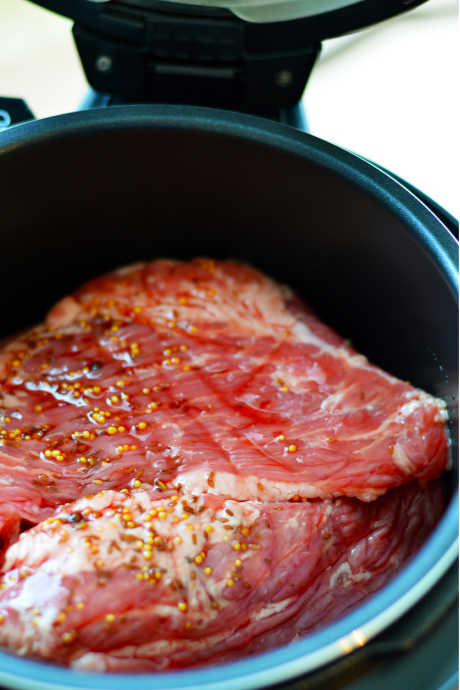The Story of Corned Beef and Cabbage
Posted by Julie on Mar 11th 2020
Corned beef and cabbage is well-known as a St. Patrick’s Day tradition, but how much do you know about its origins? Get ready for a fascinating history lesson. You might be surprised to learn where this meal comes from, who eats it, and how easy it is to prepare. Whether you have Irish heritage or not, corned beef and cabbage is for everyone.
Beef in Ireland
Before England invaded Ireland, cattle were rarely eaten there. The Irish prized cattle for their labor and their milk. Cows were only slaughtered when they could no longer give milk or work in the fields, and only the rich could afford the beef. In fact, the Irish primarily ate pork and bacon, as pigs were raised for food rather than cattle. When the British took over Ireland, they brought potatoes with them and began exporting cattle for their meat.
A Growing Taste for Corned Beef
In the mid-1600’s, Parliament passed the Irish Cattle Bill to prohibit the export of Irish cattle to England. The goal of this bill was to protect British landowners from Irish competition. Instead, it further lowered the price of beef in Ireland, and the Irish began exporting meat across Europe and to America. The beef was cured using salt crystals the size of corn kernels, and that’s how corned beef got its name.

Salt was another reason for the increased export of corned beef. In addition to plentiful cattle in Ireland, the salt tax was much lower than in England, so it cost less for the Irish to produce corned beef.
However, the Irish still couldn’t afford to eat their own beef. Life was not peaceful in Ireland during this time, and the British controlled all aspects of Irish Catholics’ livelihoods. The Irish continued to consume primarily pork and bacon, along with cabbage and potatoes.
As the population grew in the newly formed United States, they also began to produce corned beef themselves. While the overseas demand for corned beef started to abate, the Potato Famine struck Ireland and living conditions became untenable. Many of the Irish emigrated from Ireland to the United States in search of a better life.
Irish-American Traditions
It was the Irish immigrants to the United States who popularized corned beef and cabbage as we know it today, and who also made this meal a St. Patrick’s Day tradition. Beef was more affordable in the United States, and brisket was one of the cheapest cuts of all. Salt-cured beef was simmered with vegetables like cabbage for a hearty, filling, and inexpensive meal that even poor Irish immigrants could provide their families. The salty beef gave the cabbage more flavor, and the long, slow cooking process made tough brisket tender and delicious.
St. Patrick’s Day in the US and Ireland
While Irish immigration was booming in the mid-1800’s, St. Patrick’s Day was first honored with a parade in 1762 in New York City. Irish-American traditions surrounding St. Patrick’s Day have been going strong ever since, with corned beef and cabbage at the heart of the day’s festivities.

St. Patrick’s Day in Ireland has evolved over the years. Because the day falls in the midst of Lent, it was traditionally more somber, though the Irish were allowed to eat meat and other indulgences forbidden during Lent. Until 1970, pubs were closed on St. Patrick’s Day. Nowadays, the Irish celebrate by going out to the local pub in the evening, after a meal of pork and cabbage.
How to Prepare Corned Beef
Ready to make corned beef and cabbage at home? This dish is hearty and comforting, and it’s really simple to make. With a few tips, you can even forego using a recipe.
While you can cure brisket yourself, the easiest way to start is with a package of corned beef in brine. It’s already cured, and it’s ready to cook. Allow at least three-quarters of a pound of beef per serving because it will cook down more than other cuts of beef.
Packaged corned beef is usually cured with a salt known as Prague powder. It’s mostly table salt, with a small percentage of sodium nitrite. While nitrates and nitrites are common in cured meats, they’re also found in root vegetables and leafy vegetables.

You can cook corned beef on the stovetop, in a slow cooker, or even in a pressure cooker. Cover the corned beef with water and add seasonings like salt and pepper, a bay leaf, sprigs of thyme and parsley, or whatever your chosen recipe calls for. Bring everything to a boil, and then reduce the heat to a simmer and cover the pot. Check it regularly to ensure the beef is covered with water. Add the vegetables -- cabbage, onion, and carrots -- near the end of the cooking time. Corned beef will be fully cooked and tender after three to four hours. Let it rest after cooking before you slice it, and cut slices against the grain.
Still prefer to work from a recipe? We understand. This recipe from Epicurious includes carrots, onions, and cabbage, and the corned beef is seasoned with dry English mustard (like Colman’s), along with thyme and parsley, and salt and pepper. This recipe from The Spruce Eats calls for carrots, red potatoes, onions, celery, and cabbage, and the corned beef is seasoned with a bay leaf, salt and pepper. Feel free to adjust the type and quantity of vegetables based on your personal preferences.
 Free shipping over $49
Free shipping over $49










